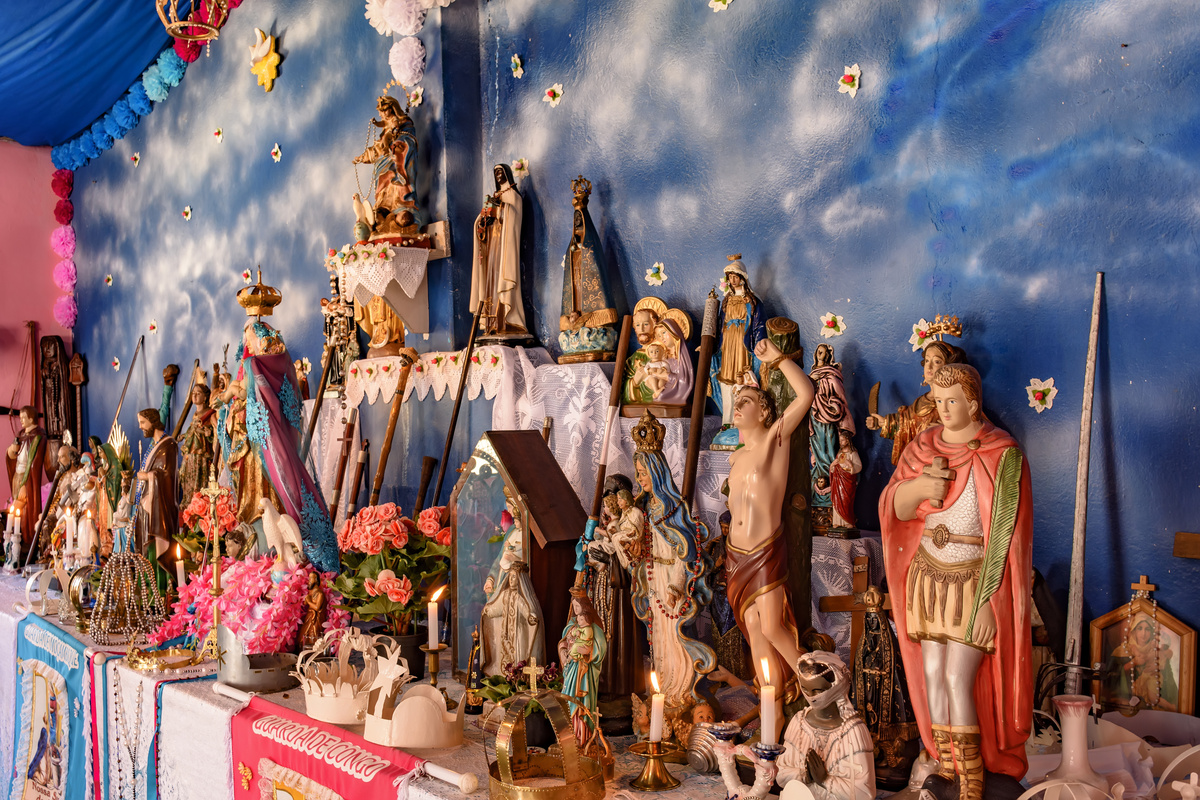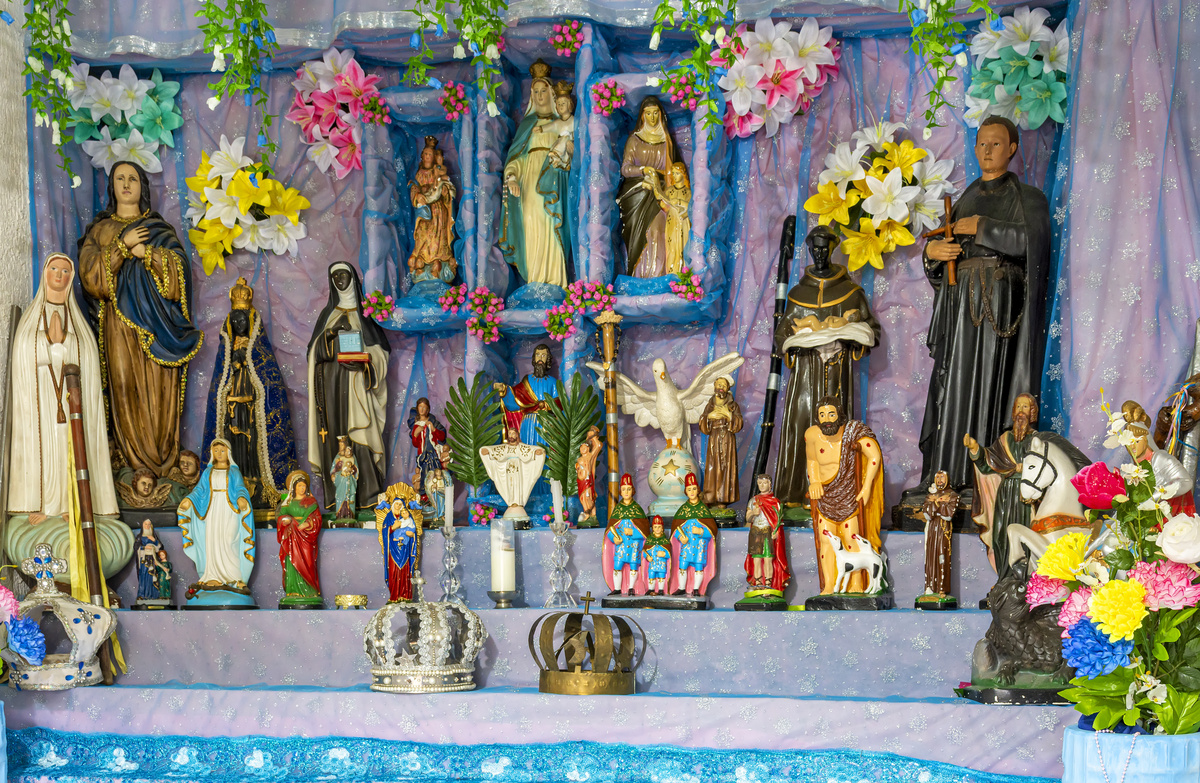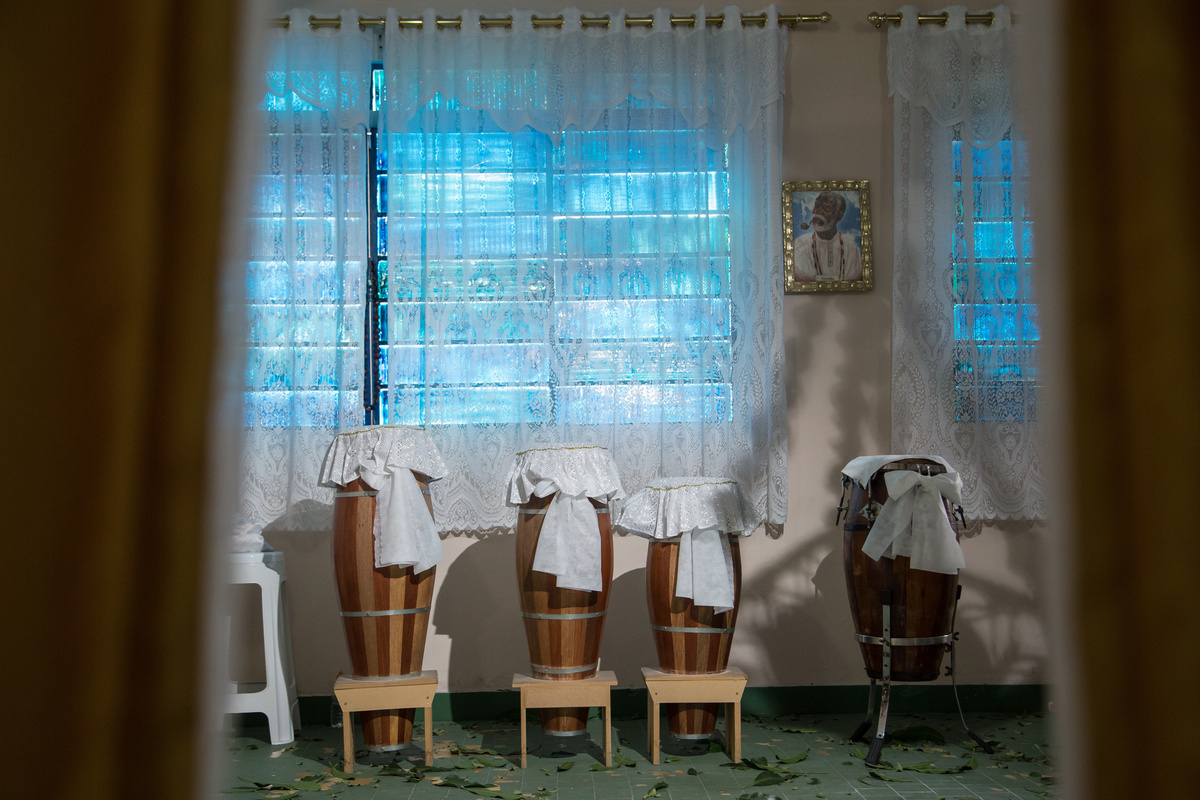Table of contents
Who is Xangô?

Xangô is the Orixá of justice, being the symbol of balance, rationality and executor of the law of return. To Xangô, one usually asks for wisdom to be fair in his actions and evaluates the injustice committed by the other with some mercy, because you are not perfect either. This impartial aspect is symbolized by his axe that cuts both ways, seeking justice regardless of whobe the person.
In Umbanda, any entity that vibrates energetically in the line of Xangô will act according to the principles of this Orixá. Thus, you can see that the Exus that work in the line of Xangô act mainly in the fulfillment of cosmic justice, although they also work in desobsessions and all kinds of spiritual cleansing.
What are the exus

The concept of Exu can generate some confusion between who would be the Orixá and who would be the various entities that work under the name Exu. Therefore, the definition of who is Exu and how he works will vary between Umbanda and Candomblé. In Umbanda, the Exus work in lines of action, for each Orixá. Meanwhile, in Candomblé, Exu is the Orixá itself.
What are the exus in Umbanda
The Exus in Umbanda are entities that also work on the earthly plane, usually under the supervision of more evolved entities, such as pretos velhos or caboclos. In Umbanda, the Exus should only practice good and charity, also climbing in their spiritual evolution.
There are several phalanxes of Exu, and each one vibrates in a particular energy, associated with a particular Orixá. Thus, it is possible to say that there are Exus who work in the line of Ogum, Xangô, Omolu and other Orixás.
What are the exus in Candomblé
In Candomblé, Exu is a messenger Orixá that acts as an intermediary between the human dimension and the dimension of the Orixás, being the intermediary of the cowries. Exu is dynamic and it is considered that he is present in all places, as if he were the dynamics of nature itself.
Thus, for any offerings made to another Orixá, another must be given to Exu. In Candomblé, Exu represents the masculine, dynamism, strength and is linked to the elements fire and earth, having little association with water.
The concept of spiritual phalanx

To summarize, a spiritual phalanx is an organization of spirits who work either for good or for evil. In this way, phalanx is briefly a way to group a line of spirits in categories. Therefore, see below how the phalanxes are organized in Umbanda and what is the vision of Candomblé about this concept.
In Umbanda
The phalanxes, in Umbanda, consist of the grouping of certain spirits in lines of work that follow certain archetypes. Each one of these archetypes represents an Orixá, being that for this Orixá will work a chief of phalanx.
To exemplify, there is the Orixá Omolu and for him work several chiefs of phalanx, like Exu Caveira. For each one of the chiefs of phalanx there are several spirits, like Rosa Caveira for the given example.
The spirits that work for a phalanx chief choose to act for him according to their identification with the line of work. That is why we do not incorporate Orixás in Umbanda, since their energy is very strong, being incorporated only the collaborating spirits that transmit the message of the phalanx chief.
In Candomblé
Regarding Candomblé, it is also not possible to totally incorporate the Orixá, only entering in tune with its vibration. However, there are no intermediary spiritual phalanxes in Candomblé, since this religion does not have that Kardecist arm present in Espiritismo and Umbanda.
Thus, in Candomblé, the communication between the Orixás and the person is made through the cowrie shells. In fact, Exu himself is responsible for the cowrie shells, communicating the message of the Orixás to the human being, although Oxum also has a certain participation in the cowrie shells.
The Exus corresponding to the spiritual phalanx of the Orixá Xangô

The Exus corresponding to the spiritual phalanx of Xangô vibrate in the energy of this Orixá, working with issues related to justice and helping those who seek them. Among these Exus are Exú Gira Mundo, Meia Noite, Mangueira, Pedreira, Ventania, Corcunda and Calunga.
Exu Gira Mundo
The Exu Gira Mundo acts in the breaking of demands and is highly effective for desobsessions and spiritual cleansing work as a whole. Therefore, this is a highly powerful Exu, also working with entities without light that are called Eguns. The Exu Gira Mundo works in a serious way, having a more serious expression and acting based on the justice of Xangô, working with the law of return.
Exu Midnight
The Exu Midnight is responsible for the portals, acting at midnight, as the name implies. He acts in mediums incorporated with black cape, black hat and a costume with a more mysterious tone. This is a very famous Exu in all spirituality, from quimbanda and magic to Umbanda, where he acts only for love and charity.
Exu Mangueira
Very famous for his ample healing power, Exu Mangueira also acts on the energy of Xangô and acts in favor of the law of return. This Exu can make people who have acted in the wrong way have their karma fulfilled, repaying what they have done wrong to another person, and also repaying what was done well.
Exu Pedreira
The Exu Pedreira is a guide for those who find themselves facing a dilemma, especially if it is related to injustice. This Exu helps the person who wants to be fair, but does not know if the decision they will take will be the most balanced or not.
In fact, the quarry is one of the points where the energy of Xangô is more in tune, due to the fact that the Orixá Xangô has a strong relationship with rocks, which explains why the color of this Orixá in Umbanda is brown.
Exu Ventania
For those who desire protection whenever they go through obstacles, the Exu Ventania is a faithful friend. He supports the righteous in moments of darkness, so that the deserving person can overcome obstacles and acquire new life lessons after overcoming the challenge. You can call him to open your paths when you need help to choose the right attitude when facing a dilemma.
Hunchback Exu
While he was still alive, he was a judge of the Inquisition and committed several injustices. However, after discovering that his creator was a gypsy, part of a people that he was prejudiced against and had executed, Exu Corcunda repented and swore that he would never commit any injustice again. Thus, Exu Corcunda works in the line of Xangô for justice and executing the law of return.
Exu Calunga
The Exu Calunga is the bearer of strong magic and works in cemeteries, being one of the actuants in transmutation. He presents himself in the form of a dwarf, but do not be deceived, since he is highly powerful and can perform various works of spiritual cleansing. After all, he works effectively in interactions with other disembodied spirits.
How to find out if my exu is of the line of Xangô?

To discover which is the Exu that accompanies you, it is necessary that you do a mediumistic consultation so that the entity incorporated in the medium reveals which is the Exu that accompanies you. If you prefer, you can also consult the cowrie shells that are not prohibited in Umbanda, although they are little used.
Thus, to find out if your Exu is from the line of Xangô, it is important to understand which one accompanies you and analyze its name. After that, it is important that you understand what are the characteristics of the Exu who is by your side, either by the name of the entity or even by its performance more focused on the fulfillment of justice.

